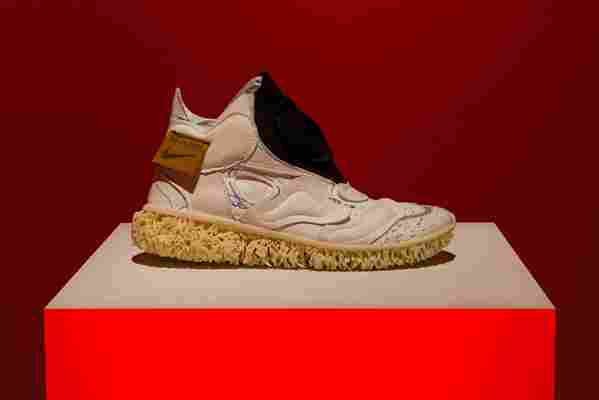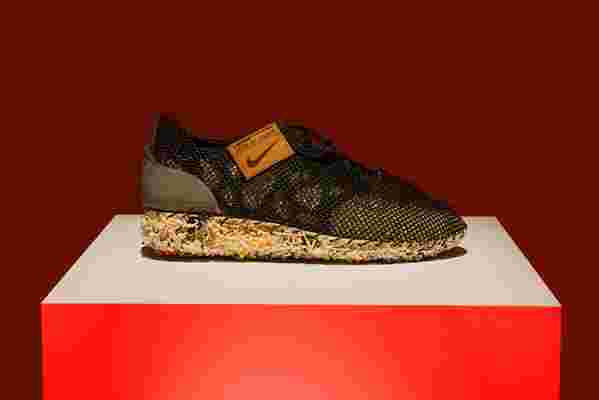With the 19th annual Milan Design Week in full swing last week, the attention of the design world was centered in northern Italy. Among the many high-end furniture and lighting companies in attendance, Nike seemed to be somewhat of an outlier. And while the famed footwear firm did collaborate with ten designers for a furnishings installation called Nature in Motion , it also took the opportunity to showcase futuristic prototypes of Nike shoes.
Presenting actual mock-ups of future models, instead of mere sketches, is nothing new for the 52-year-old brand. Yet with the advent of 3-D printing, the process of making concept shoes is much quicker and cheaper. “Tinkering with prototypes has always been in Nike’s DNA,” says Nate Jobe, senior design director for NikeLab Footwear Innovation, the group that works on special projects. “Bill Bowerman, the founder of our brand, famously made one-offs in his own garage. This idea of perpetually working on a shoe until it’s perfect is only enhanced by 3-D printing.”

A Nike mock-up that mimics the short-cut grass of a putting green on its sole.
Among the models on display, several explored the possibility of using 3-D printing to create different versions of experimental outsoles, made of materials like printed grass and smooth stones. The idea to use a soft 3-D–printed material mimicking grass came after Nike’s running performance team traveled to Stanford University and met with track runners at the school. The group was shocked to see the athletes running barefoot on the grass. “When we asked the coach why this was,” says Jobe, “he responded, ‘because this is strength training, and after a while, your Nike shoes hurt my runners’ feet.’” As such, the Nike team went back to headquarters with the plan to try a 3-D–printed version of grass on future soles. “We then took biometrics on the bottom of the foot while running, and strategically placed the synthetic grass at different parts of the sole,” says Jobe. “One prototype has the grass bent over, another features the sensation of cut grass, while another is like a putting green.”

Another model of Nike’s future shoes that harness the power of 3-D printing technology.
The question is, will any of the innovative prototypes on display be available soon for mass markets? “It won’t necessarily be anytime soon, as this is an ongoing process. We are revealing the process and exploration we go through to come up with our futuristic designs,” says Jobe. “Very similar to how there were once sketches on paper, now we have 3-D versions that can be showcased, and hopefully will have an impact on other designers and how they model their next shoe.”
